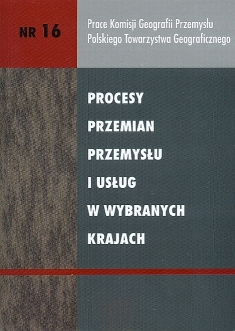Przestrzenne zróżnicowanie wielkości ruchu turystycznego w Grecji
DOI:
https://doi.org/10.24917/20801653.16.22Słowa kluczowe:
ruch turystyczny, GrecjaAbstrakt
Owing to its features, Greece is a country that can meet a whole range of tourist expectations. The country is a popular destination - the number of tourists is constantly increasing; in 2007 the number amounted to 18,754,593 visitors, over 92% of whom were Europeans. Greece is the most popular with the citizens of the Great Britain, Germany, Italy, Holland, France, and the neighbouring countries - Bulgaria, Albania and Macedonia. However, the tourism intensity is spatially differentiated. Attica and the South Aegean region, Ionian Islands and Crete enjoy the highest popularity among tourists. The regions of islands are most intensely visited, while the lowest intensity of tourism is observed in Epirus and West Macedonia. The highest tourism intensity ratio is observed in the case of the South Aegean region, and the lowest - in West Macedonia.Downloads
Metrics
Bibliografia
Ellingham M., Dubin M., Jansz N., Fisher J., 1998, Grecja – półwysep, Wydawnictwo Pascal, BielskoBiała.
Flis J., 1966, Półwysep Bałkański, [w:] Geografia fizyczna świata, red. Z. Czeppe, J. Flis, R. Mochancki, Wydawnictwo Naukowe PWN, Warszawa.
Gaworecki W., 2007, Turystyka, Polskie Wydawnictwo Ekonomiczne, Warszawa.
Grecja – mapa samochodowa, 2005, Wydawnictwo Copernicus, Wiedeń.
Kowalczyk A., 2001, Geografia turyzmu, Wydawnictwo Naukowe PWN, Warszawa.
Rusin W., 2007, Grecja, Wydawnictwo Pascal, Bielsko-Biała.
Warszyńska J., Jackowski A., 1978, Podstawy geografii turyzmu, PWN, Warszawa.
Pobrania
Opublikowane
Jak cytować
Numer
Dział
Licencja
Artykuły publikowane są zgodnie z warunkami licencji Creative Commons (CC BY-ND 4.0; uznanie autorstwa-bez utworów zależnych).

